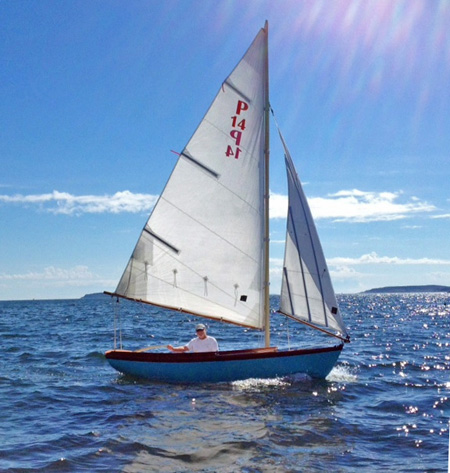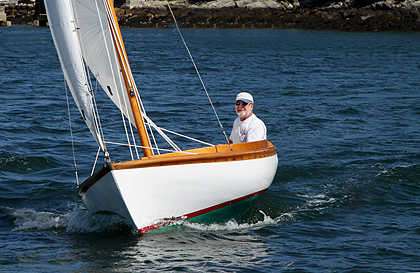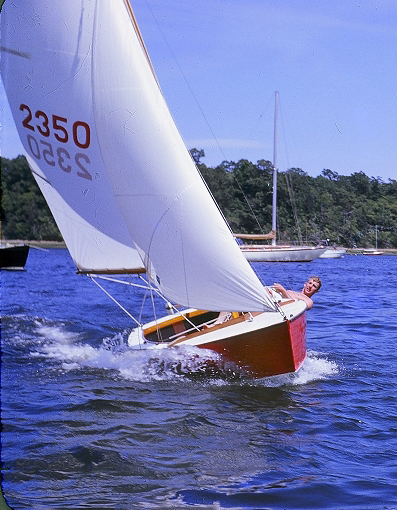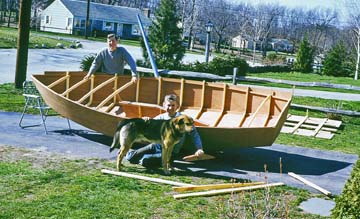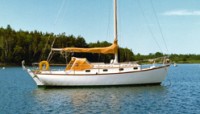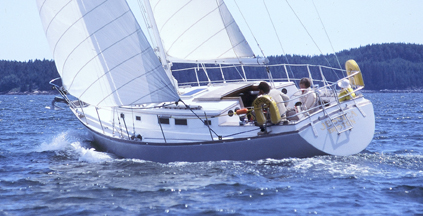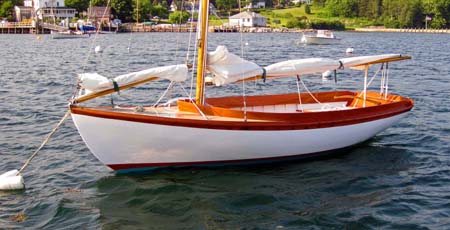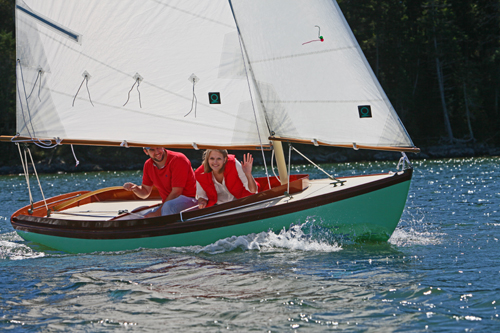
Perhaps the most beautiful small boat ever built.
I hope with this beautiful small yacht and her larger sisters to rewrite the history of the search for pleasure under sail. I’ll start with a few theses on yacht ownership, specifically PAINE 14 yacht ownership. Read more below.
Details
Frank Lloyd Wright said, “The devil’s in the details”, and it’s as true for yacht architecture as bricks and mortar.
Since we fully expect the PAINE 14 to become an enduring legend we’ve spared no effort to sweat the details. Here are just a few examples:
- The cockpit coamings of the PAINE 14 rake outward, to permit the coamings to cradle your back at just the right angle when seated― and to match the timeless aesthetic that Nat Herreshoff perfected a century ago on the Herreshoff 12 1/2. We have specified real and labor-intensive varnished mahogany (or teak, or painted— your choice) coamings to insure that the PAINE 14 is correct in every detail.
- A century ago Nat Herreshoff came up with his signature sculpted wale strake. It served no purpose other than to be gorgeous. We have slavishly copied this feature on the PAINE 14. You can’t get more authentic than that, and did we mention… the shape is gorgeous!
- In order to be easily singlehanded the PAINE 14 jib is self-tending. You never have to touch a jibsheet even when short-tacking up a narrow channel. For years those who moved to a canal-front home in Florida thought they had given up sailing for a center console. No more- this yacht can easily short tack dead to windward up a canal, meaning you do not have to give up sailing when you move to Florida!
- We chose a length of 14 feet overall so that the boat can be easily trailered home for the winter behind the car you already own, or hoisted from the water on your boat-lift or boat-deck crane. There are no shrouds, headstay, chainplates or turnbuckles, saving you the time needed to attach them. No sail tracks so no time is lost feeding little slides onto them… instead there are five Velcro straps that attach the mainsail to the mast ever so much more quickly. It takes seconds to attach each of the straps.
- The mast has to be made of carbon fiber to be strong enough to stand without stays, and light enough to be easily stepped by one person— a mere 20 pounds. Expensive, sure, but the boat would have been imperfect with a mast of any other material.
- Larger boats spend their lives in marinas for lack of crew, unballasted ones lack the seaworthiness to venture very far from shore. The PAINE 14 is small enough to be taken sailing on a whim in any waterway reachable by road, but heavily ballasted so as to be very seaworthy once you get there. She is unsinkable thanks to large buoyancy tanks fore and aft, is stable enough that afloat or swamped she literally cannot be turned upside-down, and if swamped floats level fore and aft with 10 inches of freeboard to the coaming tops so all you have to do is bail her out and sail away.
- The PAINE 14 cockpit, where all the fun happens, occupies far more than half of the entire boat― larger than that on some boats twice her size.
- We have fitted an unobtrusive built-in automatic self-bailing system, powered by a motorcycle battery. No need to row out to bail her after a rainstorm, and it invisibly takes care of any spray that gets aboard on windy days. (At least until the battery runs dead).
- The chocks, cleats and stem band on the PAINE 14 are beautiful (and expensive) cast bronze. The blocks are highest quality Harken blocks, or of bronze at extra cost, in keeping with the traditional looks.
- There is a convenient hatch through the aft bulkhead so you can stow a lot of gear in the aft compartment.
- A beautiful varnished mahogany boom crutch that fits into a bronze socket in the afterdeck is provided. Just as Nat Herreshoff did 100 years ago, we mount the crutch slightly off center so that the tiller can be lashed to it and end up dead-on centerline, so when you launch the boat and it makes sternway off the trailer it backs straight― not turning as it would in the rudder were free to turn.
- There is a quick-release camcleat for the mainsheet and jibsheet.
- The jib is fitted Davey roller-furling, making it easy to deploy and put away.
- The jib is fitted with the simple but elegant PAINE DVT vanging device, which prevents its “kiting” when the sheet is let out.
Yachts and Investments
Anyone who has followed Chuck Paine’s career knows how much he loves his 82 year old Herreshoff 12½ Petunia. It is a timeless shape that sails beautifully in lots of wind or next to none. Chuck’s Levant 15, York 18, Pisces 21, Pentimento, Annie, Expannie, Anasazi, Gusto, and Paine 26 and others are designs that represent his extrapolations of the brilliant concept Nat Herreshoff first coined in 1914.
Chuck’s clients know that one of his first pronouncements about yachts is that the words Yacht and Investment should never be used in the same sentence, paragraph, or month.
But not always. When Chuck was just back from two years in the Peace Corps in 1972 and still in his hippie phase, he decided all he wanted in the world was a Herreshoff 12½. He spent his summer weekends sleeping in the back of his VW van and looking at every available H 12½ between New York City and Maine. He found Petunia in a mud creek boathouse on North Haven Island. Owner’s name was Bernard Smith but everyone called him “Bun”. Bun Smith knew an easy mark when he saw him. Asked $1300 for the leaky old bucket and this city kid hadn’t the cheek to settle for less than $1250.
Herreshoff 12½’s in similar condition to Petunia with the builder’s plaque intact sell today for well over $25,000. Chuck has tried stocks and never sold one for a penny more than he paid, bonds that barely kept pace with inflation, and property that is now worth a third what he parted with and headed south. The only investment he ever made in his life was that darned boat he thought he paid way too much for. Which he bought fully intending it to be a foolish extravagance, purely for the fun of sailing.
Will your PAINE 14 become an investment? Like a Herreshoff 12½ it sails beautifully, is lovely to look at, needs no crew, is built to last, will get you home in 20 knots of wind without a tow, and will never go out of style. It’s faster than the Herreshoff in light to moderate airs, unsinkable, much easier to launch, retrieve, and trailer, and impossible to capsize.
So you never know. Buy a PAINE 14 purely for the fun of it and plan on leaving it to your children. You’ll feel like a million bucks every time you hoist the sails. And with this bunch in Washington in charge of maintaining the currency, it will probably take that much to buy one in fifty years!
Boat Colors
Quick. What’s a sailboat? Answer: “A white thing in the water with a stick coming out its top.”
But does it have to be white? According to Nathaniel Herreshoff, famously, yes. He once said, “There are two colors you can paint a boat, black or white, and only a fool would paint it black.”
And so Chuck Paine believed, until his teens. Then like so many kids who lived near the water, he got caught up in the plywood boatbuilding craze. His yacht club was forming a fleet of “Bluejays”. Chuck and his twin brother took the money from their paper-routes and bought so many materials that their parents couldn’t say no. Over a winter, they built “SCRATCH” in the family garage, and painted her not white but Woolsey “Signal Red”, a color so vibrant it made your eyeballs ache.
The idea of abandoning white did not originate with the Paine twins. Every neighborhood kid who had a Bluejay that year threw tradition to the winds. Gail Auslander painted hers black and named it Bete Noir. The Dinsmoors’ Hyperion was a tranquil pastel green, Sue Eldredge’s was powder blue, Steve and Paul Hartley’s bright yellow, Carol Fitton’s white, admittedly, but with purple polkadots. In the Spring a whole fleet of the little boats was launched, and nary a one of them white. The idea caught on and the next year the International 110 fleet responded with colors of their own— every imaginable pastel hue and even one whose owner obviously had time on his hands that winter, appearing at the first regatta with his topsides in a tartan plaid!
Fifty years later it seems the world has reverted to the point where we’re back to white or black, plus maybe “flag blue” which is so close to black it might as well be.
It’s as if the leaders of the entire boating fraternity had been approached by a couple of men in black carrying zapguns and had their brains, well, whitewashed. We PAINE 14 owners say, enough of this white, already. Chuck Paine has boned up on his “Photoshop” and produced suggested paint schemes for you to choose from. You can’t go wrong drawing attention to something whose shape is so perfect. It’s like putting a beautiful dress on a lovely woman.
You’ve grown up through your forty-foot round the worlders that you never found time to use and scaled down to the powerboat you can’t afford to run anymore. Imagine how colorful your harbor will look with a fleet of PAINE 14s filling the bay every weekend.
We’ve made it easy for you. We can help you choose your topside color with a custom Photoshopped rendering. The bottom paint manufacturers have finally come up with a white antifouling that looks almost white. So celebrate a little and add some color to your life.
THE STATE OF THE YACHT
Some thoughts on yacht design and ownership
By Chuck Paine
As some of you may know my once prolific yacht design business C.W. Paine Yacht Design, Inc. closed in December of 2008. The financial downdraft of 2008 sent many of those who might have become my design clients― and all of my existing ones― scrambling to rescue what was left of their savings.
The economy has recovered a lot since then thanks to massive money-printing, (our children will inevitably pay for this) and I am back at the drafting table. But I am limiting my efforts to sailboats, small ones at that, and only for my trusted boatbuilder friends rather than the Wall Streeters who tended to be my former patrons.
The Halcyon Days
Looking back on my career I realize how fortunate I was to have ventured into it when I did. My aspiration to design yachts coincided with an unprecedented post-World War II expansion of Northern hemisphere economies and their middle classes. Before that war the number of people who could afford to build a yacht numbered in the hundreds. The mass-production of yachts in order to make them more affordable came into being with the advent of fiberglass. Governments and Wall Street expanded the money supply through massive borrowing against the well-being of future generations, and the illusion of economic growth without limit encouraged the wealthy and even the not-so wealthy to purchase my creations.
If you detect a caveat in this sentence you sense correctly. The limits that global warming and resource depletion and repaying 22 trillion dollars of debt and the replacement of workers by technology, and redistribution via regressive taxation policies of almost all wealth to the top 1% at the expense of all other classes, and humane care for the disadvantaged among us will impose upon future consumption are only now being dimly perceived. Hence the “Great Recession” and in its wake, the great debt explosion.
I believe the yachts of the future will be far fewer in number, far better in quality, and built to last far longer than those of today. They will be made use of more constantly than those of past generations. As will, I believe, all manmade products. Our earth cannot for much longer sustain mass-consumption for its own sake and the day will come when we will be ashamed to have ever willingly called ourselves “consumers”. We are depleting the finite gifts stored within the crust of our planet at an alarming and suicidal rate. Not being suicidal by nature, man will eventually cease to do so.
Sucking Out the Remaining Oil
We cannot thoughtlessly continue converting fossil fuels into carbon and depositing it into the atmosphere at anything like the pace we have done in the recent past. Some are saying fracking will save us. And it may well save US. But it merely hastens the day when our children have to survive without this finite and irreplaceable gift that took eons to create and a mere two centuries to squander. The day will come when the burning of our remaining fossil stockpile merely for pleasure (motor-boating included) will be considered a serious crime.
This bodes well, of course, for sailboats. I believe it is inevitable that yachts propelled by sustainable energy (wind) will rapidly replace those propelled by our dwindling supply of oil. There is only so much of it left under the ground, and only so much our atmosphere can absorb, but the wind will blow forever.
In the future we will rediscover the preciousness of watery marshes and value them more highly than marinas full of receding rows of unused faded gelcoat. As a hopeless boat lover and the “rainmaker” for my company my first visit to any new city on many a business trip included walking the floats of every marina I could find. With each passing year it became more obvious to me that the majority of these yachts ceased to ever actually be used. Many of the sailboats would be stripped of their sails, the motorboat bottoms fouled with marine growth from lack of use.
Surely if any resource goes unused past a reasonable length of time it should be ground up into its constituent elements and a new use found for them, and many essentially abandoned mass-produced “yachts” fall into this category. In a world of depleted resources we will have no alternative but to produce far fewer “things”, which last far longer, and find ways to share these less numerous items more equitably so that each of them produces sufficient enjoyment to compensate for the unavoidable environmental damage its construction entails.
How Yacht-lovers Will Live in the Post-Consumer age
An essential reality of yachts is that they are a form of overgrown toy―a toy for those of considerable means, one must admit, but a toy nonetheless. Like all toys, yachts bestow the greatest joy when brand new. While the shelf life of a yacht is a great deal longer than a Barbie Doll or GI Joe, there can be as little joy in owing many a ten-year old mass-produced “yacht” as there is in owning a much fondled doll a fortnight after Christmas. The monetary value of most such “yachts” passes through the same stages as any other toy, decreasing rapidly to near nil when the other kids on the block all boast of having one just like yours.
I believe— and I know it’s a far from commonly held belief— that in the near future humanity’s entire motivation for economic activity will undergo a revolution. Acquisition and consumption— former motivations for work— will be replaced by an effort to redress the terrible (and terror-ism engendering) disparity between rich and poor. The embarrassing fact is, “We” have far more than enough; “They” are dying of starvation. Only when we have addressed this disparity will the rewards of yacht ownership be justifiable for those who take the lead in bringing about a fairer, safer from terrorism, and more ecologically sustainable world.
Living, and Thriving, with Less
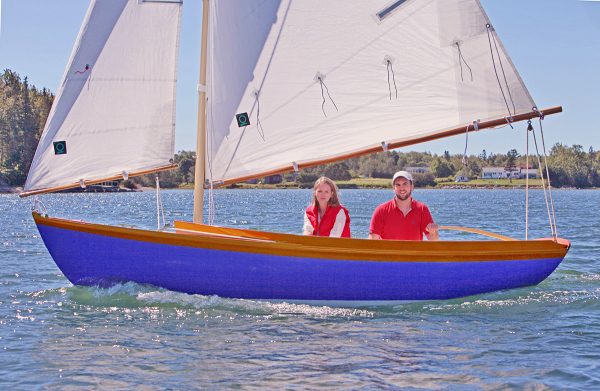
In the post-consumption age it will become socially unacceptable to own the piles of mass-produced consumer-crap that spews from Chinese factories through our local big-box stores and into the self-storage villages of Western Civilization. We will cheerfully learn to be happier with less. But while we will own less “stuff”, the stuff we do own less of will be of much higher quality. We will focus our leisure lives around the enjoyment of One Perfect Possession. For some it will be their automobile, bicycle, kite-surfer and for people like me, their sailing yacht. We may end up with only one such possession rather than the scores of unused ones we own today, but it will be a car, bike, board or yacht of the highest quality. Our world of dwindling resources can sustain this one very special possession, especially if we keep and enjoy it for a very long time.
The World’s Most Expensive Test-Ride
There was a time in the history of dating when you only got the thrill of the test ride after you had signed a contract that ended when death do us part. Likewise in boating. You’d see a sleek beauty on a mooring or at a boat show but you only got to experience her performance after spending hundreds of thousands of dollars and committing to a lifetime of maintenance. I call this, in both cases, “The world’s most expensive test ride”.
These days, not so much. There are still some boat manufacturers who know how important that “first thrill” is to would-be buyers, and who will not let you get a hand on the tiller until you have signed a contract. But they are becoming few and far between. Increasingly, and rightly, boat buyers are insisting on the test ride before the contract, and builders are finding that if they don’t have a “demonstrator”, they can’t sell their product. In the past, folks who wanted the experience of sailing a fifty-footer, say, had no choice but to buy one or have one built. Today they can charter a boat of the size they are contemplating, put her through her paces in some tropical paradise, and walk away after a week with the thrill ingrained in their memory. Chartering will result in far fewer yachts sitting unused on moorings and in marina slips.
Shared Ownership
New ways beyond chartering will emerge for yacht lovers to share ownership. I was a reasonably clever guy who came into a world full of newly prosperous individuals wanting beautiful yachts. Many of these new owners failed to consider how much time out of their working lives could be devoted to actually using them. Surely in the near future some clever lad with a computer will write a computer program that will enable twenty or so would-be yachtsmen to share one very beautiful yacht as if it were solely their own. Websites are springing up (Airbnb) that permit homeowners to share unneeded rooms or second homes in exchange for a fee. It is only a matter of time before yachts will be similarly shared.
There was a time when one needed to own a yacht to see the wondrous turquoise seas of the Caribbean, Seychelles, Society Islands and the nautical world’s many other idyllic destinations. No longer, thanks to the advent of chartering. Many who once owned larger yachts will get their big-boat thrill out of chartering, and their weekend joys from a much smaller daysailor that they keep near their home, or on a trailer in their garage.
My Yacht Owning History
My personal ownership of yachts has traveled a path that I am discovering is well worn by others. I began as a teen who got caught up in the plywood boatbuilding craze of the late ‘50s. My twin and I built our racing bluejay SCRATCH in our parents’ garage in Warwick, RI at the age of 14.
Thirteen years later when I was just back from two years in the Peace Corps and still in my hippie phase, I decided all I wanted in the world was a Herreshoff 12½. I spent my summer weekends sleeping in the back of my VW van and looking at every available H 12½ between New York City and Maine. I found PETUNIA in a mud creek boathouse on North Haven Island. I have owned PETUNIA for the past 49 years and have spent half my life restoring and sailing her. I’ve gotten more joy out of owning her than any man has a right to.
After I moved to Maine in 1973 and opened my design office I discovered there wasn’t enough work for an unknown neophyte designer, so I supplemented my meager income by building boats. The first was FRANCES, the 26-foot double-ender whose design I sold to Tom Morris, giving me my start as an independent yacht designer. A four-year, four-yacht boatbuilding and boat-selling binge culminated in a 30-footer, my beloved ANNIE. I had sold that design too to Tom Morris and he generously let me have a hull and deck from his molds at a price I could afford.
Many years later in 2005 my father-in-law Frank passed away, leaving his 39-foot sailing yacht of my design JESSICA to my wife and her siblings. I had fond memories of that boat, having sailed with Frank three times to Bermuda, and during many other summers up fog-enshrouded coasts to the Bras D’ Or Lakes and the St. John River. Nobody wanted the boat no matter how low the price so out of nostalgia I bought her, along with a partner. He and I put a year of nights and weekends and $50,000 into restoring her.
Then I discovered what so many others have— that I didn’t have time in my life to use A 39-footer. Every summer weekend I had my choice― PETUNIA or JESSICA. The smaller boat won out every time. In the end I sold my half-ownership of JESSICA to my partner for $12,500― half what people were paying for fifty year old Herreshoff 12 1/2s!
The choice is a little harder when the 39-footer is your only boat. From what I see in marinas on fine summer Saturdays, the choice then seems to be, to not go sailing. I built an even smaller boat than PETUNIA at a cost of five times what I got out of the much larger boat, and now I sail all the time, alternating between my two small boats. Trading a big yacht that I never found time to use for an admittedly far more costly small one that I use constantly was one of the best decisions I have made in my life.
Enough About Me- How About You?
I foresee yacht ownership going full circle with renewed interest in small but very beautiful yachts― ones that can be easily gotten going and do not involve huge economic impact to maintain. Many sailors are doing just what I did― trading their large and unused cruisers for smaller, nicer yachts that they have time to use. The “daysailor” craze of the present will continue for the simple reason that it makes the most sense for people too busy to spend long stretches of time on the water. The most fun in boating is to be had close to the shore, for it is there that there is a view apart from two shades of blue or gray separated by a straight line. This fact plus a renewed interest in thrift owing to the decline in middle-class wages will result in a resurgence of small sailboats. To get your big-boat jags every once in a while, you’ll charter or yacht-share.
There will always be yachts. In the future we will find ways to make more frequent use of them. The era of mass-production to grind out as many as possible will be replaced by one of artistic competition to create fewer, far nicer ones. Larger yachts will be shared, either through “community sailing” or chartering.
In all of my musings I am reminded of a story of two men who met at a cocktail party. The Wall-Streeter couldn’t wait to tell the other about his huge home in the Hamptons, his custom-built Bentley, all of the shiny new objects that littered his lawn, and of course his new trophy wife half his age and twice his looks. My patient friend awaited an opening, which finally came after several minutes. “I’ve got something that you’ll never have”, he said.
“Oh, yeah, what’s that?”
My friend answered, “Enough.”
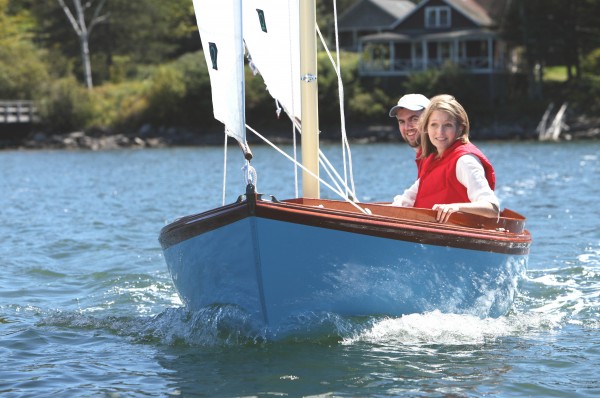
ENOUGH.
This design is featured in both of my recent books; MY YACHT DESIGNS and the Lessons they taught me, and THE BOATS I’VE LOVED— 20 Classic Sailboat Designs by Chuck Paine. Both are beautiful, full colored, first class books which give you lots more information on this design, and can be purchased on this website or at Amazon.com.

